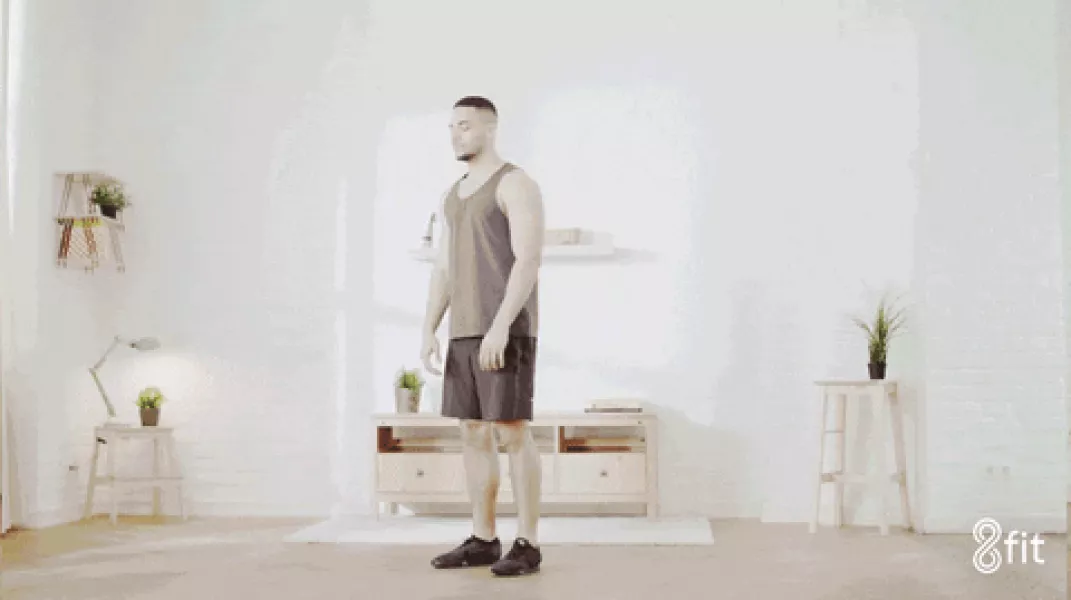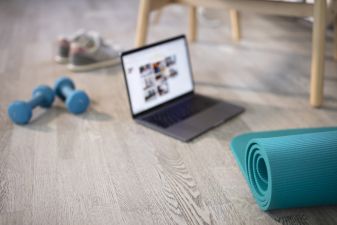Lockdown means even the most avid of gym bunnies are working out at home.
By now, we’ve become used to using wine bottles as weights and logging on to virtual exercise classes. However, keeping fit in your living room is still very different to being at the gym – there are no PTs to correct your form, and it’s tempting to give up and go back to bed.
But exercise is extremely important for our mental and physical health. Done right, it can release endorphins and strengthen your body, but there’s always the possibility of injuring yourself or not performing to the best of your abilities.
Mustering up the energy to workout during lockdown is no mean feat and should be celebrated – but if you are squatting and lunging at home, beware of falling into these traps…
Overdoing HIIT

High-intensity interval training (HIIT) exploded in popularity last year. With short, sharp bursts of cardio activity, it’s a quick way to keep fit with limited or no equipment.
“The endorphin rush that you feel (once you have picked yourself up off the floor) after a HIIT session is like no other and it can become very addictive, but it’s easy to forget HIIT isn’t a silver bullet, and you should not only do this form of exercise,” says Matt Wilman, head trainer at F45 Milton Keynes.
“When done in the right amount, it can help your body physiologically. However, doing too much HIIT can lead to increased levels of cortisol, the stress hormone, which can weaken the immune system.” Wilman recommends a maximum of three HIIT sessions a week, and you can mix it up with other types of exercise, like yoga, weights or Pilates.
Not sticking to a plan
Lockdown Training Tips 👇🏼
1️⃣ Plan your workouts for each day
2️⃣ Have purpose - set a goal for each session
3️⃣ Execute the plan
4️⃣ Something is better than nothing
Rinse & Repeat 🔁 #UnlockedPerformance_SandC #StrengthAndConditioning— Unlocked Performance S&C (@UPerformanceSnC) January 15, 2021
For many of us, working out at home means we’ve lost all sense of accountability. To make sure you don’t forget about exercise entirely, Katie Anderson, head trainer at FLY LDN, recommends making a plan.
“Find classes online that you cannot miss, for example a live class,” she says. “Most studios with online offerings save all their classes so you can catch up, however, a live experience is more fun, as you can usually interact with the instructor via the comments and see how many other people are working out at the same time as you.” For extra accountability, organise to log onto the class with a friend.
It’s also important to plan in a rest day, so you don’t overexert the body and potentially injure yourself. “If you struggle with just blocking a day as ‘rest day’ and find yourself getting fidgety and anxious about having no plans, try and schedule in specific rest time for some self-care activities,” advises Anderson.
Neglecting body parts

When you’re creating your own workout plan, it’s easy to train the body parts you enjoy. “However, overtraining one specific area and neglecting others can lead to injury in the long-term, so it’s important you try to exercise all body parts as much as you can,” says Wilman.
“I would advise you try to remember that if you train one muscle group, you need to give equal time to the opposing muscle group.”
For example, if you’re doing bicep curls, make sure you hit the triceps as well; or if you’re doing lots of squats, counter them with hip thrusts.
Not pushing yourself
Reached my first plateau in my fitness journey 😪
— Lisette Silva (@LisetteSilva29) January 14, 2021
“It’s important to be honest with yourself and think: are you training as hard as you can, or could you give your workouts more?” says Wilman.

If you feel like your training has hit a plateau, Wilman has a few suggestions to kickstart your routine. This could be using a heart rate monitor, as it can provide accurate real time feedback on your effort level, he says, or adopting a new challenge – mixing up your routine might be just the tonic to get you back to 100%.
Wilman also recommends rating your workouts. “With clients, I use the RPE scale or ‘rating of perceived exertion’,” he explains. “This is simply a one to 10 scale of how hard you are working or how hard your workout was, one being very easy and 10 being maximum effort. Rating your work as you go and after can make you more aware of how much effort you’re putting in.”
However, it’s also important to listen to your body, cut yourself some slack and celebrate the small wins where you can.







